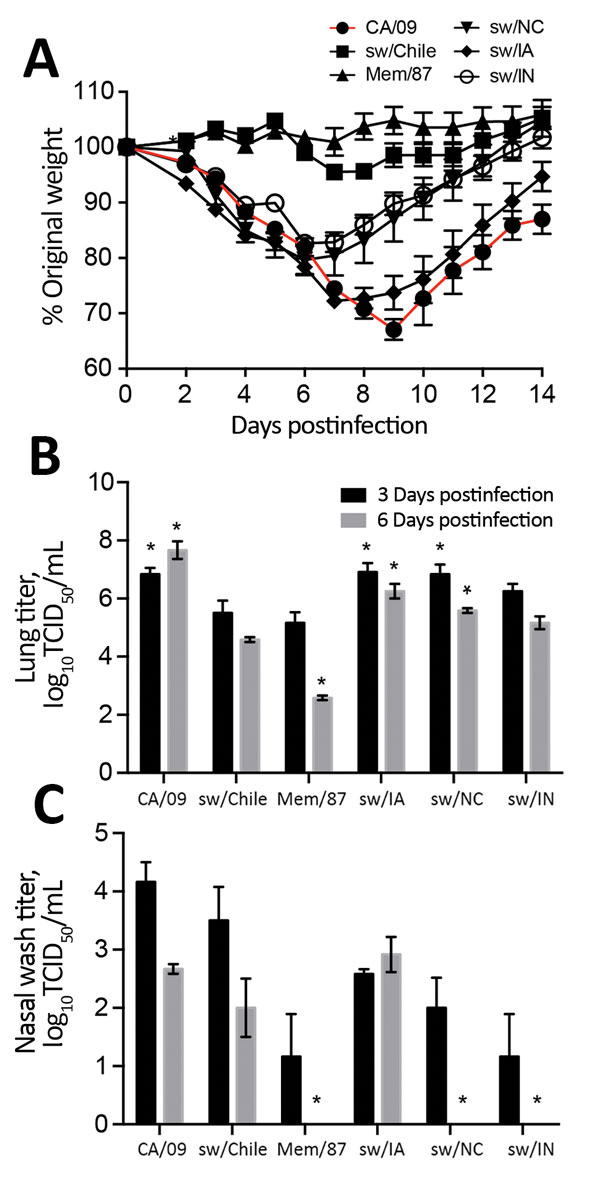Volume 23, Number 2—February 2017
Research
Swine Influenza Virus (H1N2) Characterization and Transmission in Ferrets, Chile
Figure 5

Figure 5. Replication of influenza viruses in vivo. To evaluate pathogenicity in mice, 6- to 8-week-old BALB/c mice (n = 11 mice/group/experiment) were infected with 105 50% tissue culture infectious dose (TCID50) units of the indicated viruses and weight loss was monitored for 14 days postinfection (dpi) (A). At 3 dpi and 6 dpi, lungs (B) and nasal washes (C) were collected from 3 mice/group and viral titers were determined by TCID50 analysis. Data are presented as mean ± SEM. *p<0.05 versus sw/Chile virus.
1These first authors contributed equally to this article.
2These senior authors contributed equally to this article.
Page created: January 17, 2017
Page updated: January 17, 2017
Page reviewed: January 17, 2017
The conclusions, findings, and opinions expressed by authors contributing to this journal do not necessarily reflect the official position of the U.S. Department of Health and Human Services, the Public Health Service, the Centers for Disease Control and Prevention, or the authors' affiliated institutions. Use of trade names is for identification only and does not imply endorsement by any of the groups named above.